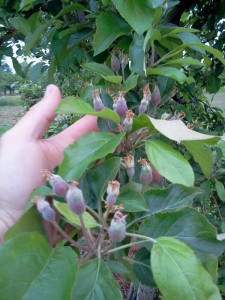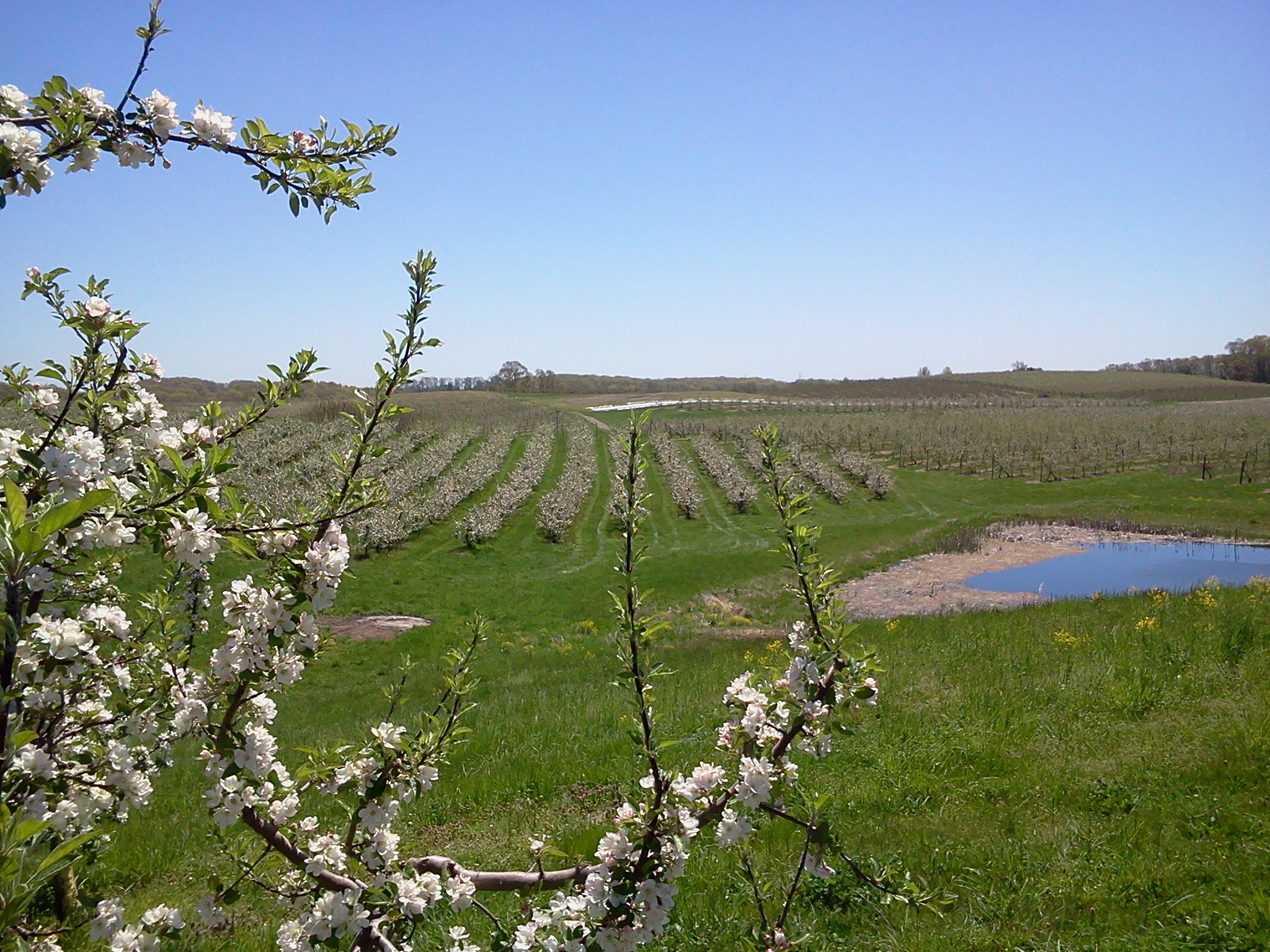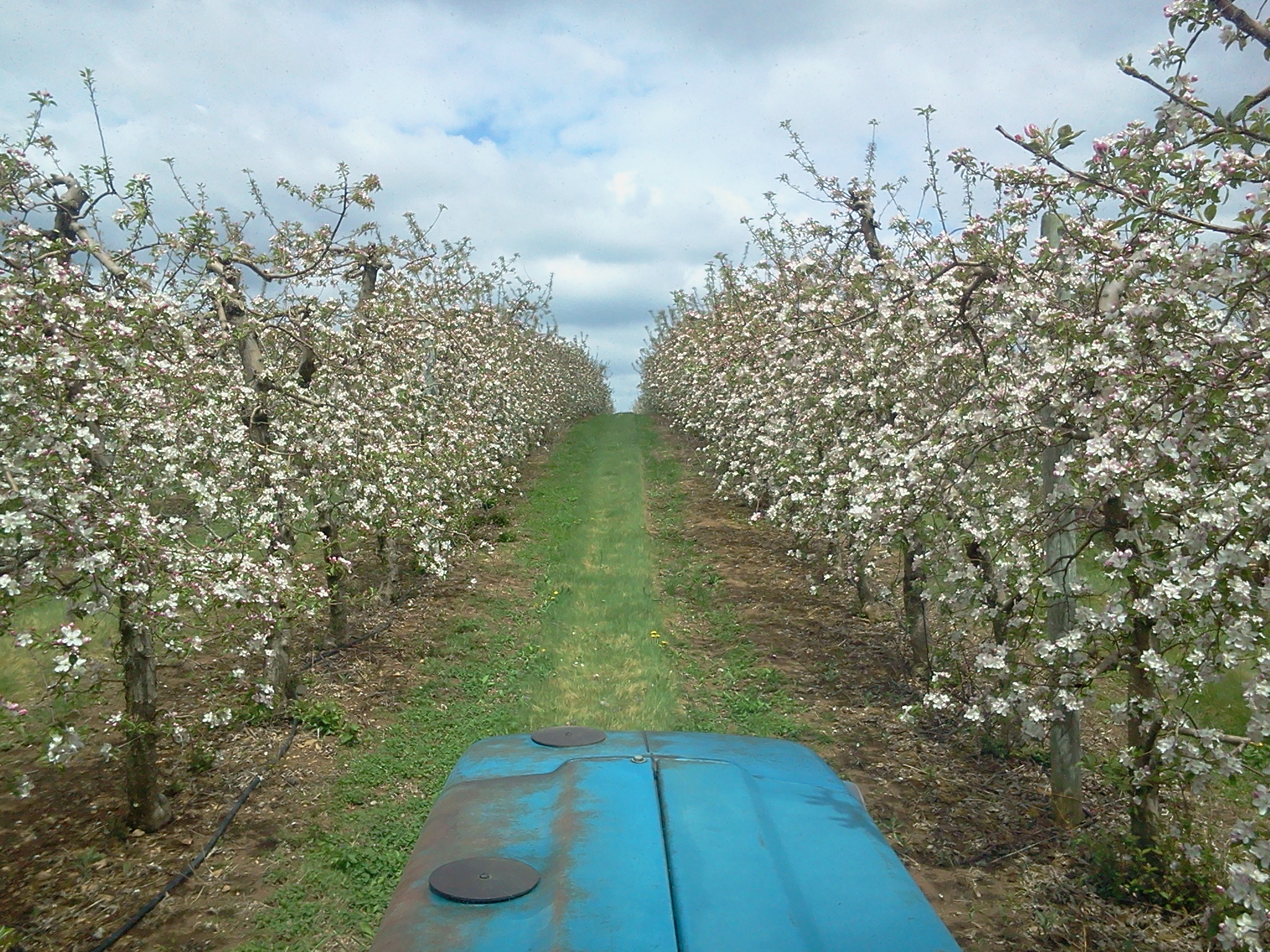When I was telling my friends back at Hershey that I was going to go run an orchard, I could tell most of them really had no idea what that involved. Some of them would make references to “going to pick apples”, and pretty much everybody understood that it was hard work, and a few correctly surmised that I wasn’t doing it for the money. But I’m pretty sure nobody knows what an apple grower does all day. And that was the genesis of this blog.
Most of my weekly posts so far highlight something important that is going on in the orchard. This one will give you a better understanding of where I spend my time.
The quick answer is simply this: fixing stuff that breaks. I hate it, but it’s true. It takes an incredible amount of equipment to run this place, and we can’t afford to replace it, so we spend a lot of time fixing things. And we develop an impressive array of skills to manage this. Here’s a listing of things my Dad and/or I (mostly Dad) have fixed in the last two or three weeks:
- Irrigation system “1”: Found that mice had completely destroyed the control panel by gnawing through the wires. I was able to apply a little knowledge from engineering school and identify the low voltage wire that triggered the main pump relay, and long story short, I hot-wired the system so that our berries could get water. At which point we found two different major pipe breaks below ground that required excavation, and then some plumbing skills with PVC. Still pending is the electronics work to get the wires spliced back together and repair the solenoid valves.
- Irrigation system “2”: A crack in a pipe was causing a leak. More plumbing.
- Sprayer fill station: The suction line cracked and needed to be rebuilt. More plumbing.
- The internet in the office kept failing: This is more complicated than it would appear because I’ve had to build a wireless bridge using high power antennas to get the signal where it needs to go. I think the problem has been fixed by a new firmware on the router.
- Cold storage main blower: Turned out to be a seized bearing that thankfully started working again with some powerful lubricant and a few prayers. But since the system is nearly 90 years old (not kidding) I’m still worried about the long term stability. Next week, we’ll start working on the backup system that seems to have a faulty compressor.
- Forklift 1: Sticky contact terminal causing it not to move. Fixed with a little TLC.
- Forklift 2: Bad idle setting caused it to stall, and it needed brake fluid.
- Bulldozer: (You really don’t want problems with a bulldozer.) Bad starter turned out to be pretty easy to fix but still took hours to take off and reassemble. Fixed.
- I’m pretty sure there was a flat tire or two. There’s always a flat somewhere.
- Sprayer 1: Major surgery to the agitator shaft. Fixed.
- Sprayer 2: Broken timing belt. Fixed.
- Mower 1: Pulled out of the mud. Hammered out a shield that had been deflected into the blade. Replaced drive guard and fixed PTO shaft.
- Mower 2: Bled the fuel system after someone ran it out of diesel. (Note: do NOT let a diesel run out of fuel.)
- Weed sprayer 1: Repair to broken fitting involved fun with fiberglass and resin.
- …. by now, if you are still reading, you’ve got the picture. Fact is, I could go on. There are actually more things we had to fix.
I’ve asked myself what we could do to minimize the time we need to put into this kind of thing. I think the causes are pretty simple: 1) stuff is generally old; but really the bigger contributor is 2) it takes an incredible array of complex machines to make an orchard work, and they get a lot of use. When you have so many old things working all the time, there are going to be problems.
So for now, we keep trying to fix the problems and find enough time to actually grow food. On the bright side, we are scheduled to open our market and start picking strawberries.
It will be nice to actually see some fruits of our labor.




